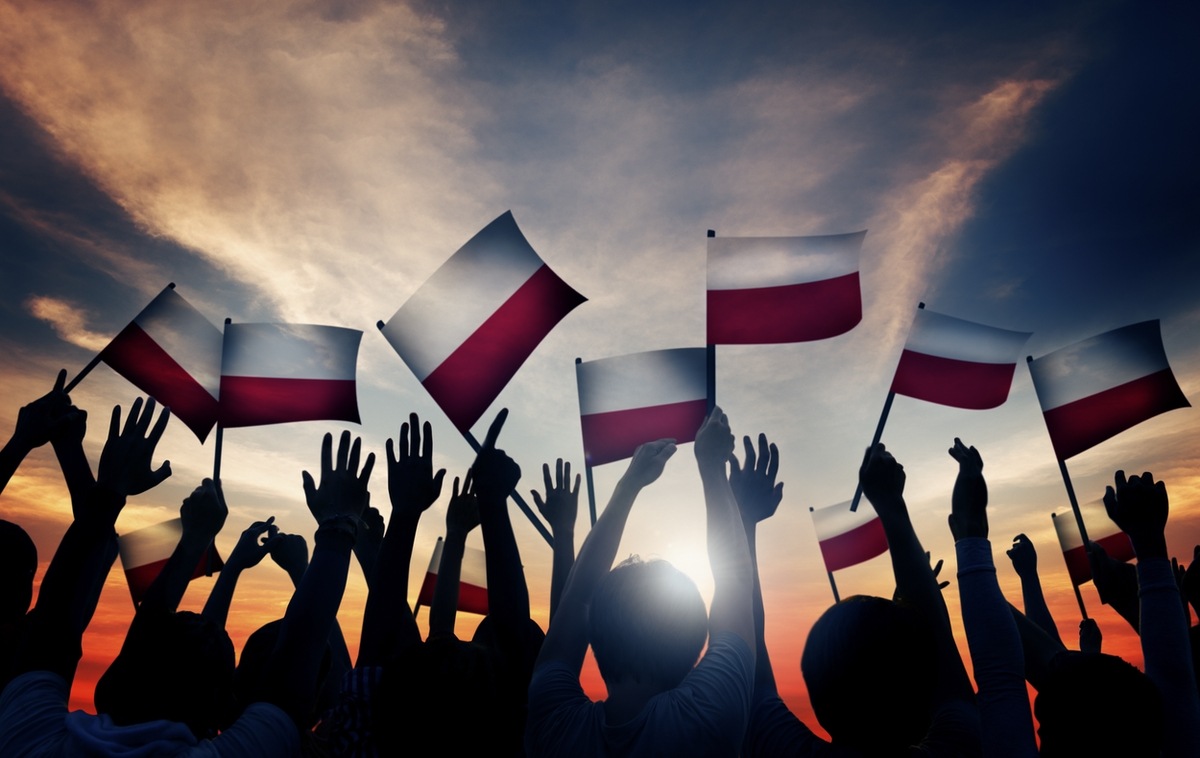European ecommerce overview: Poland
Written by
Kinga EdwardsPublished on
Here’s our e-commerce overview of Poland! Learn about market trends, consumer behavior, and the future of online shopping in this growing economy.

Poland is a Central European country with access to the Baltic Sea, and today, we will tell you more about Polish e-commerce. This country borders Russia (with its Kaliningrad Oblast), Lithuania, Belarus, Ukraine, Slovakia, the Czech Republic, and Germany. It’s a member of NATO and the European Union.
The administrative area of Poland is 312,685 km², which gives it 69th place in the world and 9th in Europe. Over 38,168 million people inhabit it. Its largest city and capital is Warsaw. That’s for starters. Now, let’s learn a few things about its e-commerce.
Polish e-commerce overview
Poland’s e-commerce landscape is the 17th largest in the world. Such a high position underscores its importance in the European digital economy. The Polish e-commerce market reached $27,965 billion in 2024 and it is projected to reach approximately $35 billion in 2029. It’s not a big surprise, since this expansion is fueled by increased digital adoption and a growing appetite for online shopping among Polish consumers.
When it comes to online shopping, one category wins – Hobby & Leisure. It contributes to 28% of the market’s total revenue. Following closely are categories like Fashion & Apparel, Beauty & Personal Care, and Consumer Electronics. These sectors have seen significant growth, too.
Platforms like Allegro, Amazon, Shein, Empik, Zalando, and even eBay dominate the scene. In fact, 86% of Polish consumers have made purchases through these marketplaces. So yes, they have a central role in the Polish e-commerce ecosystem. Among these, MediaExpert stands out as a top performer. It generated an impressive $1,943 million in online revenue in 2024.
What about social media platforms? They’re becoming shopping hubs. Poland’s social commerce market is expected to grow by 20.5% in 2025, reaching $3.68 billion.
So, as you can see, Poland’s e-commerce sector is doing quite well. With technological advancements, increased consumer trust, and a robust digital infrastructure, the future looks bright for online retail in Poland.
If you’re considering entering this market or expanding your existing operations, now is a great time to strategize and tap into the opportunities Poland’s e-commerce landscape offers.
Consumer behaviour in Poland
Poland has one of the largest consumer markets in Central and Eastern Europe. But Polish consumers aren’t just numbers. They’re smart, comparison-driven, and pragmatic. They know how to hunt for the best deals, stack coupons, and wait for promotions. At the same time, they care about where their money goes. Many shoppers today look for eco-conscious brands, transparent pricing, and companies that treat their customers like people, not metrics.
About 81% of Polish shoppers browse online at least once a month, and as many as 48% do it at least once a week. Thus, the e-commerce wave has truly become part of everyday life here, from small villages to big cities, from younger Gen Z buyers to experienced seniors using mobile banking apps like pros.
In 2024, the two most significant drivers for customers to buy online in Poland were:
- the availability of products throughout the day (76% of customers)
- and no need to drive to the store to do shopping (73% of customers).
These two main reasons remained unchanged since 2021 (image below) and continued to occupy their leading positions.
Also, in 2024, respondents in Poland stated that the main factors motivating them to shop online were lower delivery costs and lower product prices in online stores compared to brick-and-mortar stores.
Polish payment method
Consumers in Poland utilize a variety of payment methods that prioritize:
- convenience,
- security,
- and speed.
Here’s a breakdown of the most preferred payment options:
BLIK – The Mobile Payment Powerhouse
BLIK is one of Poland’s leading mobile payment systems. Introduced in 2015, it allows users to make instant payments online and in physical stores, withdraw cash from ATMs, and transfer money using a unique, single-use code generated in their banking app. By June 2024, BLIK reported over 16 million active users and processed 2.4 billion transactions worth approximately 350 billion PLN.
Bank transfers (Przelewy24, Tpay, Dotpay)
Bank transfers, in the form of pay-by-link services like Przelewy24, enable consumers to make quick transfers directly from their online banking platforms. This method is favored for its speed and security. It allows users to complete transactions without manually entering payment details.
Debit and credit cards
While traditional card payments remain popular, their usage has seen a slight decline in favor of mobile and online banking solutions. Visa and Mastercard dominate the card payment sector, with a significant portion of cards enabled for contactless transactions.
Digital wallets (Google Pay, Apple Pay, PayPal)
Digital wallets are gaining traction among Polish consumers. They offer seamless and secure payment experiences, so Polish shoppers just love them. These platforms allow users to store their card information and make payments with a single tap or click, enhancing the online shopping experience.
Cash on delivery (COD)
Yet, despite the digital shift, a segment of Polish consumers still prefer paying in cash upon receiving their orders. After all, this method provides a sense of security for those wary of online transactions.
Internet users in Poland
Nearly everyone in Poland is connected to the Internet. Whether it’s a teenager streaming music, a professional checking emails, or a retiree video chatting with family – Poland’s digital transformation is really palpable. At the beginning of 2025, there were 53.7 million cellular mobile connections. It’s equivalent to 140% of the total population. Yet the percentage of Polish users using the Internet via phones is 95.5%. Also, as of February 2025, online penetration in this country stood at 89.8%.
The government’s initiatives, like the National Broadband Plan, aim to provide universal access to high-speed internet, ensuring that even the most remote villages are connected.
Mobile internet usage has seen a significant surge. With the expansion of 5G networks, providers like T-Mobile and Orange offer impressive speeds. Such a mobile revolution has empowered citizens to access information, services, and entertainment on the go.
However, the digital divide remains a challenge. While younger generations are almost universally online, only about 25% of individuals aged 65 and older are connected. Efforts are underway to bridge this gap, with community programs and workshops aimed at teaching digital skills to the elderly.
Social media usage
Poland’s social media scene in 2025 is also vibrant. As of January, there were around 29 million social media user identities, representing 75.6 % of the total population. It means conversations, brand awareness, and customer service often start on social platforms.
Most Poles have grown up connected. With 34.5 million internet users and 53.7 million mobile connections, digital is the default lifestyle choice.
Facebook remains the top dog. About 65% of internet users are active on it, making it the go-to for both everyday scrolling and brand interaction. However, younger audiences are mid-transition – TikTok’s ad reach and usage have surged to around 50%, drawing in a wave of Gen Z and millennial users.
Instagram is thriving too, with 12.3 million users (that’s 32.7% of the whole population), mostly women and people aged 18‑34.
Messenger also plays a big role in daily communication, with nearly 20 million users touching 52.2% of the population. LinkedIn is smaller at 4.4% of the population, but it holds strong for B2B outreach and professional networking.
For businesses, these stats translate into opportunity. Brands can reach huge audiences through Facebook for broad messaging, Instagram and TikTok for visual storytelling, and Messenger for personal touch. You just need a well-rounded social strategy.
Logistics in Poland
Poland is strategically positioned. The Baltic Sea connects it with the Scandinavian countries. This makes transport in this part of Europe much more accessible.
By early 2025, the country had over 35.3 million m² of warehouse and logistics facilities (it’s nearly an 8% increase year-over-year). In 2024, developers completed 2.6 million m² of new logistics space, primarily located around Warsaw, Lower Silesia, and central Poland. Lease activity also surged, with 5.8 million m² leased nationwide – a 4% rise over the previous year. Moreover, the freight and logistics sector was valued at approximately $52.5 billion in 2025, with a solid CAGR of around 2.75% projected through 2030.
It’s also worth mentioning that Polish transport firms handled roughly 20% of EU freight transport in 2023, which demonstrates the strength of road and rail networks.
What’s natural for this digital country is that logistics operators who previously served brick-and-mortar retail are now expanding and modernizing to meet the growing demand for Polish e-commerce. They’re investing in different technologies to improve customer experiences. And so, some are piloting AI-powered route planning and some are betting on automated parcel lockers, which are booming in Poland’s largest cities. These technologies reduce last-mile delivery times and increase customer satisfaction, especially as same-day delivery becomes a competitive standard in urban areas like Warsaw, Poznań, and Wrocław.
Developers are also adapting. New warehouse parks are being designed specifically for urban logistics. They combine fast access with tech-driven infrastructure. Automation and robotics are also key inside warehouses. They can improve speed, reduce human error, and keep costs down.
Most Polish businesses know the benefits of fully digitized inventory and order management. Paper documents will become rare in a couple of years. Can we be surprised? Customers are getting used to technologies in delivery, after all. Now they receive real-time parcel tracking, with estimated delivery windows powered by machine learning. Thanks to strong IT systems and integrated supply chain platforms, logistics operators in Poland are just setting the pace for Central and Eastern Europe.
To sum up
Polish e-commerce will continue to grow exponentially. Despite rapid growth over the past few years, its needs have not been fully met. New warehouses and distribution centers are expected to be built across Poland in the coming years. Even small and medium-sized enterprises, which have relied on schemes that serve offline retailers, will invest in new developments.
So, what’s your move?
If you’re in e-commerce – or thinking about entering the Polish market – now’s the time to act. The infrastructure is growing, logistics are modernizing, and customer expectations are rising even faster. Staying passive means falling behind. But leaning in now means tapping into a market that’s ready for more: more speed, convenience, innovation.
The question is: Will your business be ready to move with them?
If you are also interested in other markets in this part of Europe, we recommend reading texts about Estonia and Russia!
***


